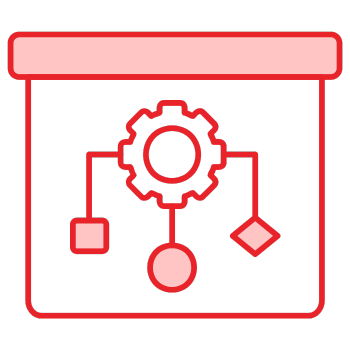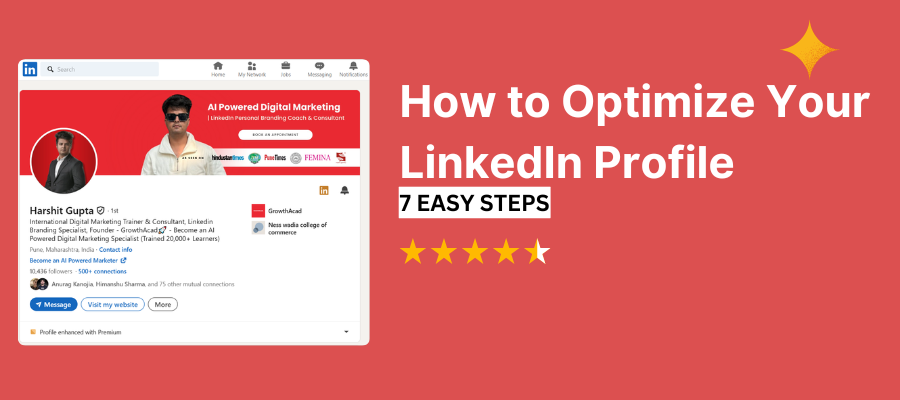
Did you know that 71% of recruiters use LinkedIn in 2025 to scout for candidates? And with 9,000 jobs applied for every minute, your LinkedIn profile is the deciding factor for a recruiter to reach out.
Even if you apply directly, the first thing they’ll do (besides looking at your resume) is check your LinkedIn.
In this blog, we’ll explore how to build a good LinkedIn profile, optimize it for recruiters, along with AI-powered tips to make your profile shine.
How to optimize your LinkedIn profile in 7 steps
Think of LinkedIn as your first digital impression for recruiters. Once you’ve set up your basic profile and information, follow these steps to further optimize it:
Step 1. Use keywords strategically across your profile
LinkedIn’s algorithm functions similarly to ATS software. Your LinkedIn profile must be aligned with job descriptions to rank higher in recruiter searches. To do this:
- Copy-paste 10 job descriptions for roles you would apply for into a notepad
- Identify recurring terms (e.g., data analysis, team leadership, sales enablement)
- Use these phrases naturally into your headline, skills, experience, and the “About” section
For example, check out how the headline below uses important keywords:
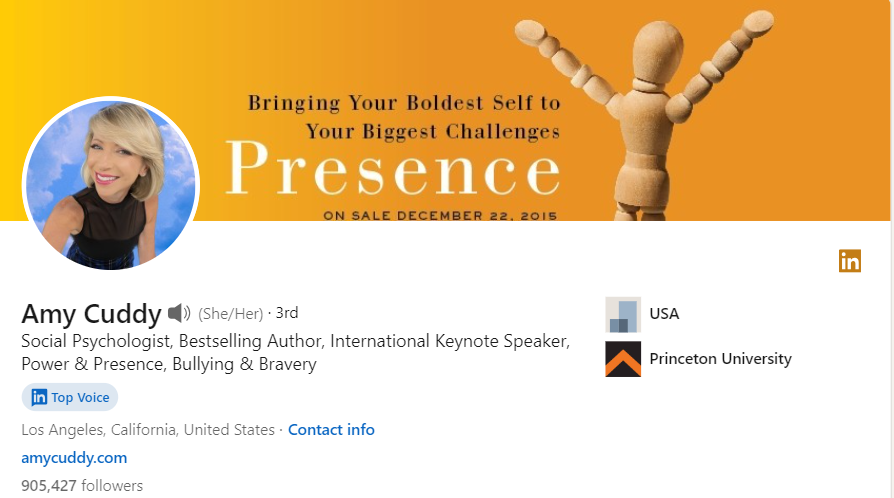
Step 2. Optimize your skills section
Your skills section must be as comprehensive and relevant as possible, as 50% of hiring managers have used the LinkedIn skills section to fill roles. Get started by adding the top 5 skills (visible on your profile) which are highly relevant to your target roles. You can regularly update your skills list or certifications to show your expertise in current trends.
This helps LinkedIn rank your profile based on skill relevance when a recruiter searches for the role. Here’s another example:
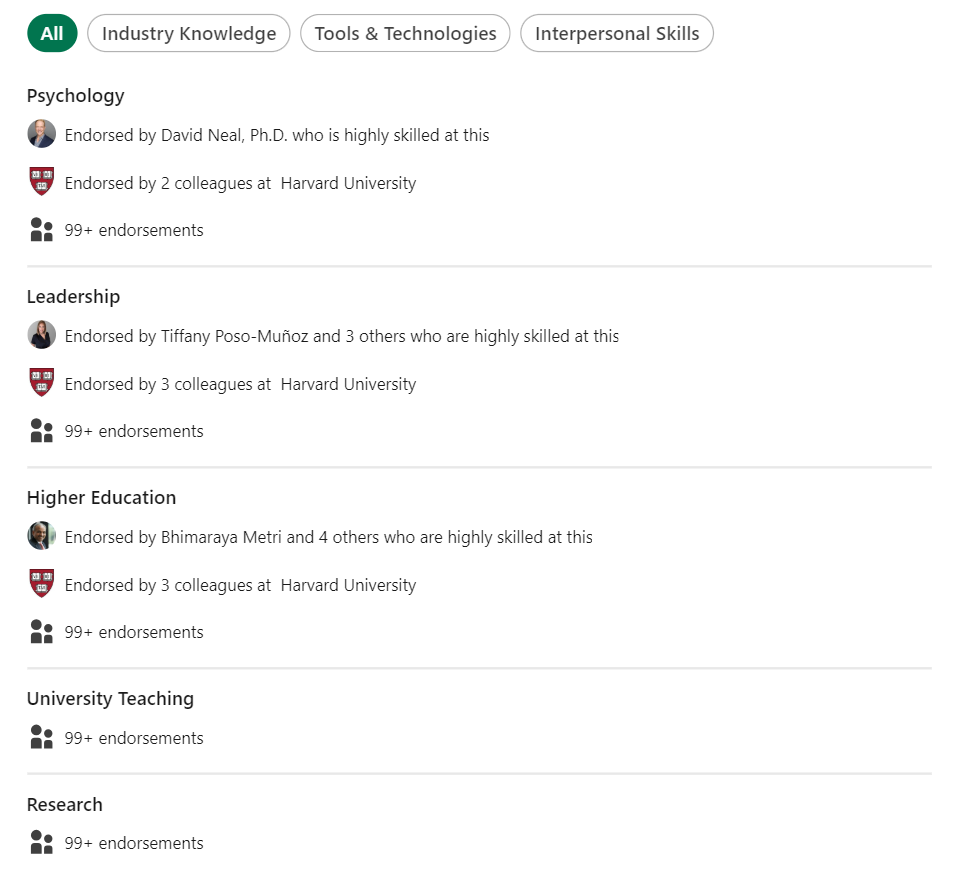
Step 3. Show your best work using the featured section
The featured section (right above the “Activity” section) is an amazing way for students and young professionals to show their most impressive work, achievements, and projects. It essentially serves as a portfolio. To optimize this section:
- Add links to your portfolio or personal websites
- Pin certifications, awards, or even well-received posts
- Include a case study where you solved a problem in your industry, such as a marketing campaign you developed during an internship
- Feature slide decks analyzing projects and their impact
Make sure to be descriptive, explaining their value. Any achievements mentioned must be quantified, such as “Increased app engagement by 20% through improved social media marketing.”
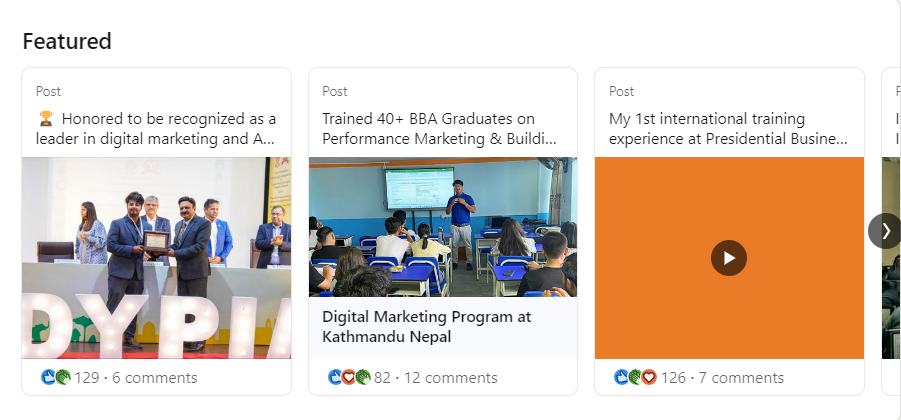
Step 4. Post LinkedIn articles to position yourself as an expert
Even if you’re new to the field, making use of LinkedIn articles is a smart way to show your knowledge, passion, and expertise. Publishing articles can boost your visibility and credibility. This is a feature where you share your insights, learning experiences, or show your problem-solving abilities.
For, example the CEO of Rakuten uses LinkedIn articles as shown:
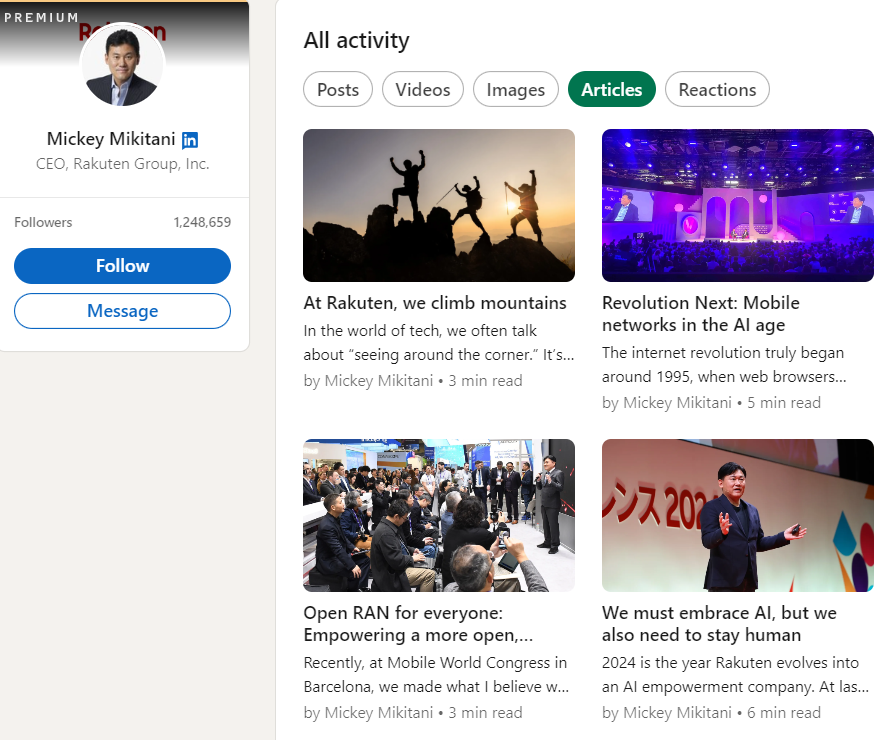
You, too, can get started by:
- Writing about current trends
- Showing a unique perspective or a personal success story
- Demonstrating your hands-on experience of tools via strategies
- Keeping the article between 500-700 words
If you’re a marketing student, you can write an article on “Top 3 Tools I Used in My Digital Marketing Internship to Deliver Results”
Step 5. Optimize the skill endorsement section
Many people overlook skill endorsements, especially for specific skills. This makes you more credible, helping you stand out to recruiters. When done correctly, this small section signals to the employer that you’re highly skilled in areas they’re looking for.
- Pin your top 3 skills from the “Skills section.” For example, if you’re a business student targeting marketing roles, pin “Digital Marketing,” “SEO,” or “Content Strategy.”
- Request endorsements from your classmates, colleagues, or managers
- Focus on quality. Having a few endorsements from credible people is more impactful
Any role can benefit from skill endorsements, CEOs even! Below is an example of Mickey Mikitani’s (Rakuten’s CEO) endorsements:
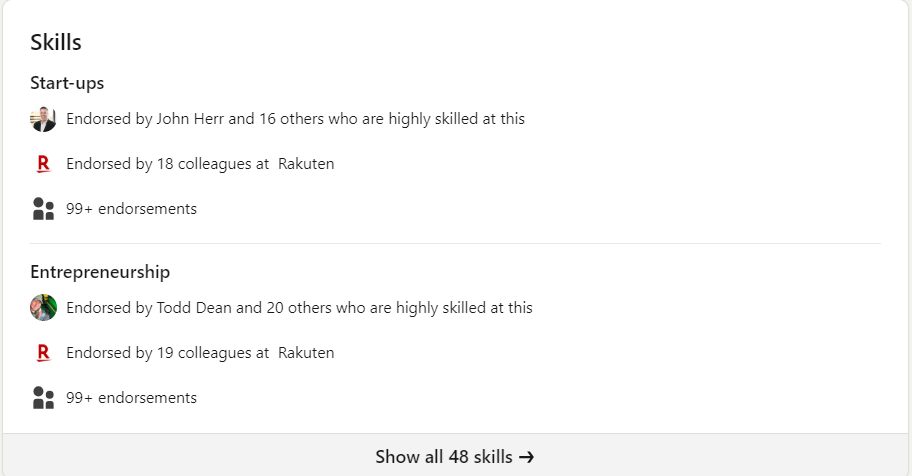
Step 6. Add creator mode and post regularly
You can level up your profile by turning on the “Creator Mode” in your LinkedIn settings. It helps you build a personal brand and show thought leadership in your field, making your LinkedIn profile more visible and engaging. It’s perfect if you’re looking to gain more following or expand your network in your industry.
Creator Mode relies on posts heavily when compared to articles, documents, or videos. Hence, make sure to use 3-5 relevant hashtags to help LinkedIn’s algorithm categorize your posts. The key is to post regularly, be it articles, insights, or even simple updates.
For example, if you’re studying digital marketing you can share regular posts about how you regularly use AI in the field along with its impact. Use hashtags like #DigitalMarketing, #MarketingAutomation, or #TechTrends.
Keep mixing up your content by using videos, polls, and articles along with your regular posts.
Step 7. Analyze your profile with LinkedIn analytics
LinkedIn has in-built analytics tools that allows you to know who’s viewing your profile, what they’re interested in, and which keywords are driving the most traffic. This helps you create and post relevant content to better target clients, recruiters, and other professionals.
To make the most of LinkedIn’s analytics tools:
- Check the “Who’s Viewed Your Profile” section to get a detailed analysis of who;s looking at your profile, including their industries and other information. This helps you understand if you’re attracting the right audience.
- Based on profile visitors, update your headline and skills to include more targeted keywords.
- Consider posting more content that will resonate with the audience
After refining your profile based on data, see how your search appearances and profile views change over time.
Why should you optimize your LinkedIn profile?
With recruiters turning to LinkedIn to find top talent, candidates too must make sure their LinkedIn profiles are visible. Your resume and profile go hand-in-hand when a recruiter decides if you’re fit for the role. The benefits also extend beyond recruitment, and into leads, networking, branding, and so on.
Let’s explore deeper and look at some major benefits of optimizing a LinkedIn profile:
Job seekers (Students, graduates, professionals)
LinkedIn profile is where recruiters, hiring managers, and colleagues look to learn more about your work experience, qualifications, and interests. An optimized LinkedIn profile helps job seekers in the following ways:
- Increases the chances of being seen in search results for a specific title or skill
- Helps stand out from other candidates
- Increases visibility in the network
- Grabs the attention of hiring managers scouting for talent
- Being approached for the right opportunities
Business owners or entrepreneurs
Business owners use LinkedIn as a platform to build brand awareness, connect with clients, and network. This helps show their expertise or promote their products and services. Achieving this requires optimizing their LinkedIn profiles to:
- Attract potential clients who find your business through keywords and your posts
- Position yourself as a thought leader via valuable content
- Increase brand’s presence online
- Display product demos, case studies, or testimonials
- Appear in search results for the services you offer, attracting leads
Recruiters and talent acquisition professionals
Recruiters too can optimize their LinkedIn profiles for the following benefits:
- Attract candidates, helping them find you
- Stand out as a trusted recruiter, connecting with high-quality candidates
- Increase visibility and access to a larger pool of applicants
- Build a professional network
Thought leaders and influencers
If you aim to become a thought leader or an influencer, optimizing your LinkedIn profile becomes non-negotiable. You will heavily be involved in building a following, engaging with your audience, and publishing content regularly. You can:
- Receive invitations for conferences, webinars, and speaking engagements
- Attract connections from other influencers
- Increase trust with your audience, making it perfect to launch your services
- Position yourself as an expert, attracting opportunities for consulting, coaching, or partnerships
How to use ChatGPT to optimize your LinkedIn profile
AI is everywhere, even on LinkedIn! From helping recruiters find the right candidates faster to providing personalized recommendations, AI is beginning to become a major player in how we network and find jobs.
With more and more people using LinkedIn, you can use AI to optimize your LinkedIn profile through the 3 steps mentioned below:
- Optimize your basic sections (Headline, About, Skills, Experience)
These are the core areas recruiters first check. Ask ChatGPT to create a headline that combines your career focus and skills, write a summary that accurately explains your background, list your skills and describe your work experience.
For example, you can use these prompts:
“Create a LinkedIn headline for an SEO intern with skills in keyword research, on-page SEO, and Google Analytics, looking for full-time opportunities in digital marketing.”
“Write a LinkedIn ‘About’ section for a young professional who completed an SEO internship, with experience in on-page and off-page SEO, keyword research, and Google Analytics. They are passionate about digital marketing and eager to expand their skills in SEO and content marketing.”
“Write a description for my internship experience at [Company Name] where I worked on improving SEO strategies, doing keyword research, and analyzing website traffic using Google Analytics. I also helped optimize content for search engines and created reports on SEO performance.”
- Add keywords based on roles you’re interested in
Using the right keywords makes sure your profile is found when employers search for specific roles.
- Identify the roles you’re interested in
- Find the skills and keywords used commonly in these roles (take the help of AI)
- Add these to your profile
For example:
“What keywords should I add to my LinkedIn profile to target SEO roles, such as ‘SEO Specialist’ or ‘SEO Analyst’? I have experience in on-page SEO, keyword research, Google Analytics, and backlinking. Help me choose the best keywords for my profile.”
“Help me update my LinkedIn skills section for an SEO internship graduate. I want to include skills like ‘SEO’, ‘Google Analytics’, ‘Keyword Research’, and ‘Content Optimization’. What’s the best way to phrase them so they align with the latest SEO trends?”
- Use LinkedIn analytics to improve your profile
This helps you check if your profile and keywords are working, helping you adjust content to attract the right people. When using AI, you can give specific information on whom you’re targeting or what the content is for.
For instance:
“I’ve noticed that my LinkedIn profile views are mostly coming from tech companies. Can you help me adjust my LinkedIn headline and About section to make it more appealing to recruiters in the tech industry for SEO roles?”
“I checked my LinkedIn Search Appearances and noticed that I’m being found for ‘digital marketing’ roles. What keywords should I add to my profile to make it more aligned with SEO job searches, particularly for roles like SEO Specialist or SEO Analyst?”
Well-optimized LinkedIn profile examples
Now, let’s look at some LinkedIn profile examples that have incorporated the above discussed steps.
This profile’s important sections are thoroughly optimized, such as the headline, about, experience, skills, and services.
Look at how the headline incorporates relevant keywords and titles:
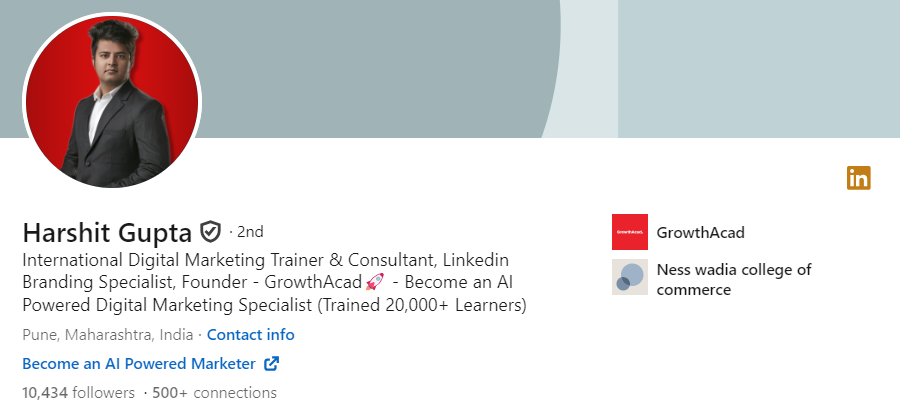
The experience section includes clear projects, key skills applied in that role, and the tasks the role required:
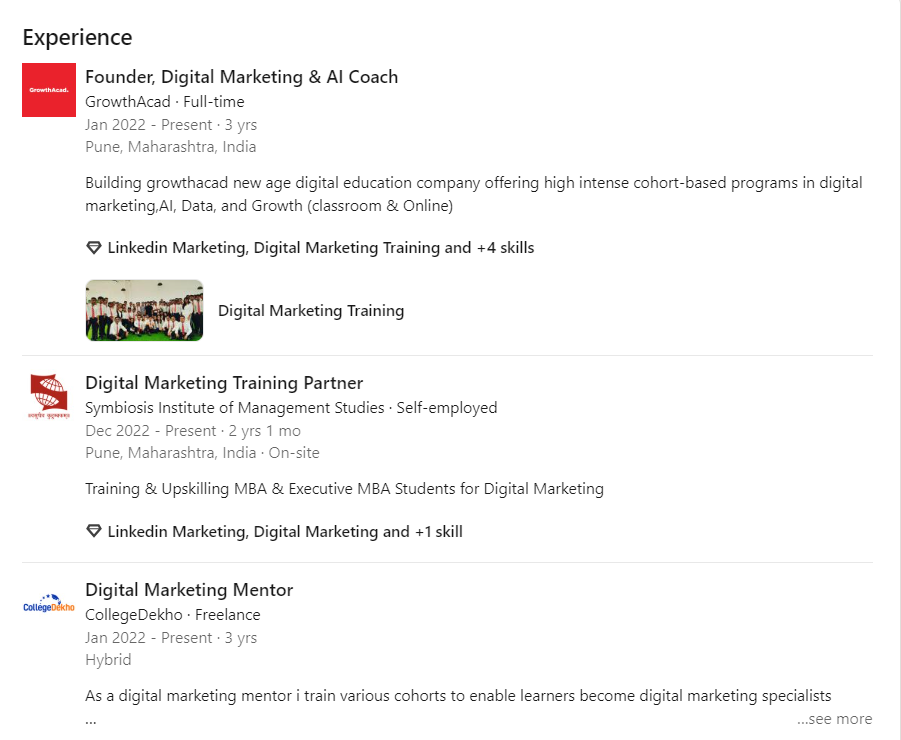
This profile is also regularly active on LinkedIn:
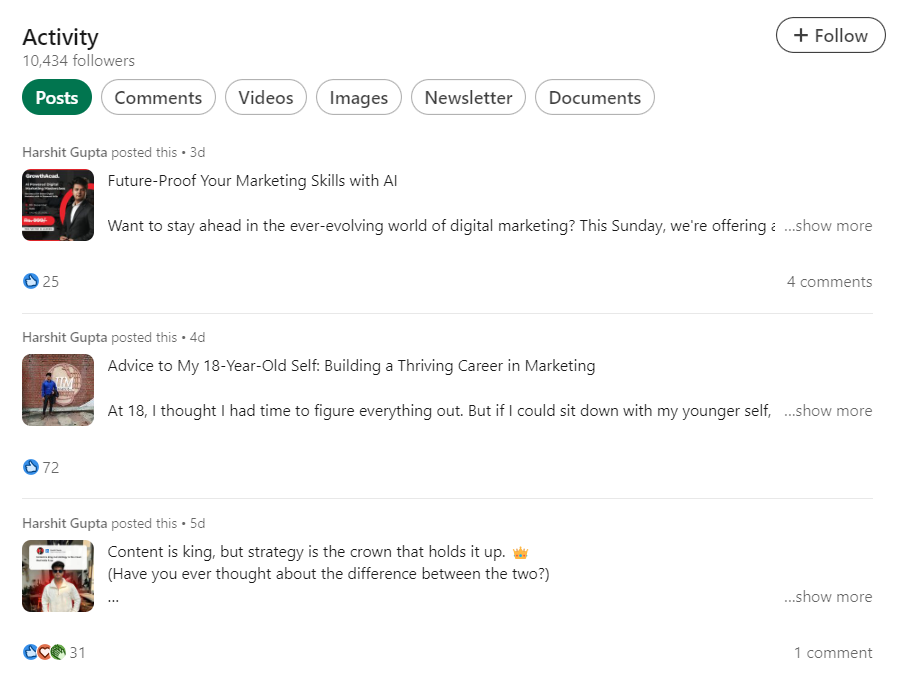
Gary’s LinkedIn profile is comprehensive, with clear contributions in the experience section and clear “About” section.
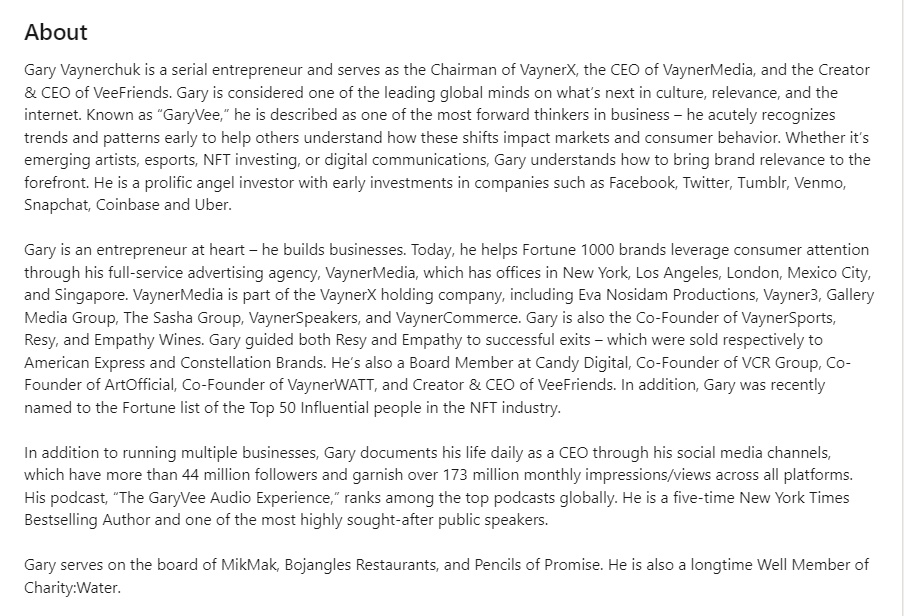
It also includes awards won, recommendations from industry leaders, and skill endorsements, and engaging videos.
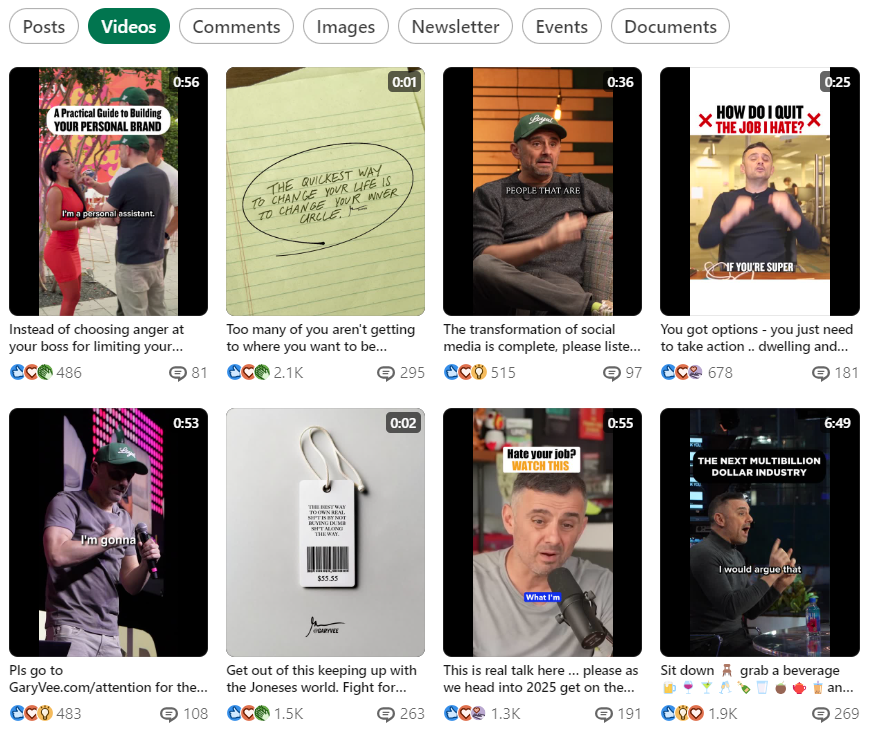
Jeff Weiner’s profile also has clear headlines, experience, skills, and value proposition. It contains a detailed summary of professional background, but what truly stands out in this profile is the engagement on posts and the recommendations received.
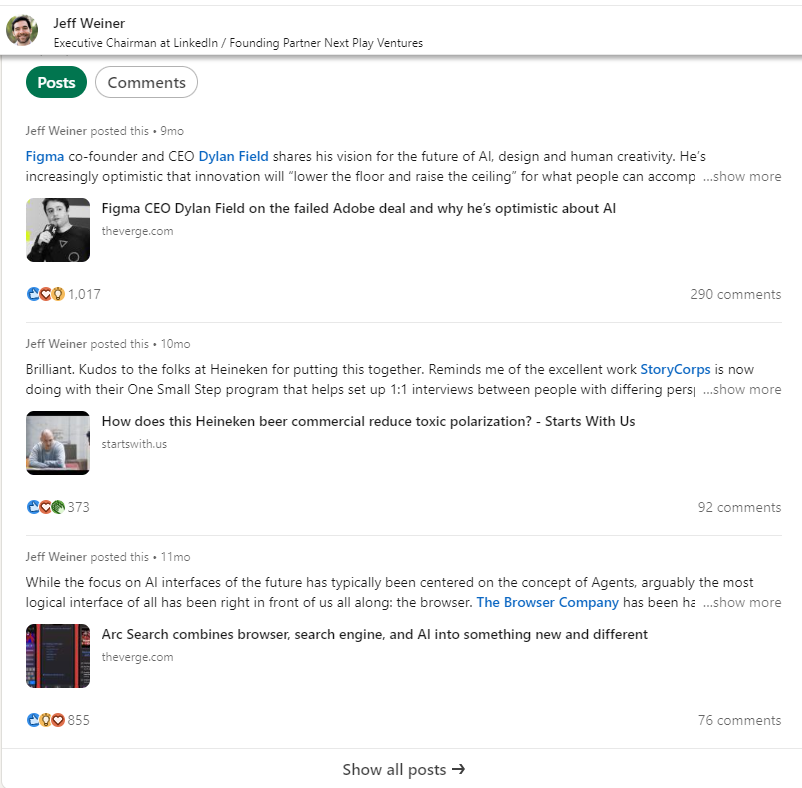
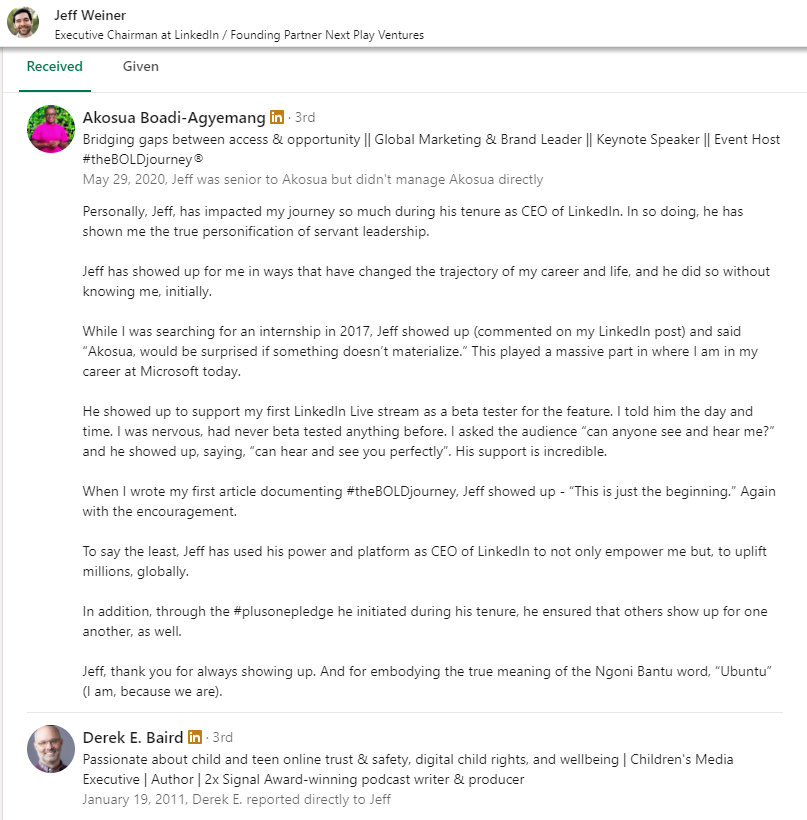
Looking for a digital marketing job? Enroll in GrowthAcad!
GrowthAcad offers India’s first AI-powered, cohort-based course to help you excel in digital marketing. We have trained 10,000+ students and helped them get employed in leading brands like Google, Amazon, Accenture, Coca-Cola, and many more.
If you’re a job seeker, an aspiring thought leader, or a business owner planning to launch your own website, this course has got you covered. We focus on hands-on projects and learning while also providing interview assistance to help you get the job.
At the end of the course, you’ll master AI integration into digital marketing programs, work on real-world challenges, get a certificate, and work at your dream company!

Article by
Harshit Gupta
Harshit Gupta is a digital marketing specialist and growth marketer with over 9 years of experience in the industry. He is the founder of GrowthAcad, where he and other mentors have trained 10,000+ students in the past 5 years.
Harshit started his digital marketing journey with a startup called Hash & Karma, a performance-based digital marketing agency, where he scaled the company from zero to 50 clients in just two years. Connect him over LinkedIn & Twitter.
